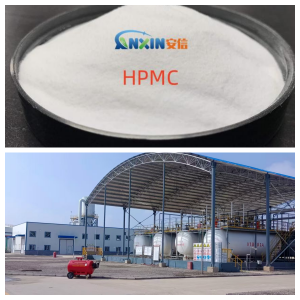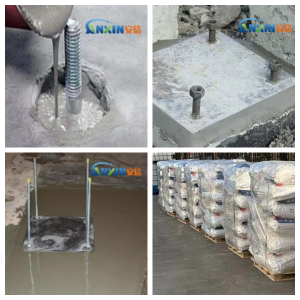The role of HPMC in grouting materials
Hydroxypropyl methylcellulose (HPMC) is a commonly used high molecular non-ionic cellulose ether, which is widely used in construction, building materials, coatings and chemical industries. In grouting materials, HPMC mainly plays the role of thickening, water retention, improving workability and improving material stability, which is crucial to ensure the workability, strength development and final construction effect of grouting materials.
1. Improve the water retention of grouting materials
Grouting materials usually contain cement, sand, fly ash, mineral admixtures and various additives. During the mixing and hardening process, sufficient water is required for cement hydration. HPMC can form a molecular film on the surface of the particles, significantly reducing the loss rate of free water, so that more water in the mixture is used for cement hydration instead of being quickly absorbed by the substrate or the environment. Good water retention can extend the construction time, reduce segregation and bleeding, and improve early strength and volume stability.
2. Improve consistency and fluidity balance
After HPMC dissolves in water, it will form a uniform, stable and high-viscosity solution, which can effectively improve the system consistency of the grouting material and prevent particle sedimentation. At the same time, an appropriate amount of HPMC can make the slurry have a higher viscosity when it is stationary, and the viscosity decreases under shearing (such as pumping or grouting), showing good pseudoplasticity. This “thixotropic” feature is conducive to the grouting material to smoothly fill small gaps during construction without segregation.
3. Anti-segregation and anti-bleeding effect
In the absence of cellulose ether, the grouting material is prone to aggregate sinking and slurry bleeding, resulting in uneven strength distribution and early shrinkage cracks. HPMC can enhance the system’s ability to suspend aggregates and inhibit water floating by increasing the viscosity of the water phase and forming a network structure, thereby reducing water bleeding, segregation and porosity, and improving the density and durability of the molded body.
4. Improve construction performance
HPMC makes the grouting material show better lubricity and viscosity retention time during the construction process, which is convenient for flowing and filling in complex structures and narrow spaces. Good water retention can also delay the early water loss and hardening of cement particles, allowing construction workers to have longer operation and finishing time. At the same time, the appropriate consistency ensures that the slurry can be firmly attached to the surface of the substrate, reducing the risk of hollowing, falling off and late shrinkage cracking.
5. Improve interface bonding performance
Since HPMC can be evenly distributed in the slurry and form a synergistic effect with the cement hydration products, the slurry has better density and adhesion after hardening, and adheres firmly to the foundation surface, which helps to improve the bonding force between the grouting layer and concrete, steel bars or other substrates, reduce interface microcracks, and improve the bearing capacity and durability of the overall structure.
6. Enhance temperature resistance and shrinkage resistance
HPMC in the grouting material can improve the temperature change resistance and shrinkage resistance of the mixture. Due to its excellent water retention effect and uniform hydration process, it can significantly reduce the risk of shrinkage cracking. In addition, HPMC can also maintain the stability of slurry performance under high-temperature construction environment, avoiding early strength loss caused by rapid evaporation of water.
7. Dosage and precautions
The typical addition amount of HPMC in grouting material is usually 0.1%~0.3% of the mass of cementitious materials. The specific dosage should be determined according to the construction environment, fluidity requirements and formulation system optimization. Too low addition amount will lead to insufficient water retention and poor fluidity, while too high addition amount may affect strength development and workability. Therefore, in the formulation design, it is necessary to combine the fluidity, pumpability and early strength of the grouting material for comprehensive regulation.
8. Economic and environmental benefits
Although the amount of HPMC is small, it has a significant comprehensive effect on improving the performance of grouting materials. Its water retention effect reduces rework and quality problems caused by rapid water loss, thereby improving engineering efficiency and reducing costs. At the same time, reducing water seepage and segregation during construction also reduces material waste and environmental pollution risks.
HPMC is mainly used in grouting materials to improve water retention, increase consistency and stability, and optimize workability and interface adhesion to ensure the filling quality and hardening performance of the grout under complex construction conditions. Reasonable selection and precise control of dosage can significantly improve the construction efficiency and long-term durability of grouting projects.
Post time: Jul-28-2025








